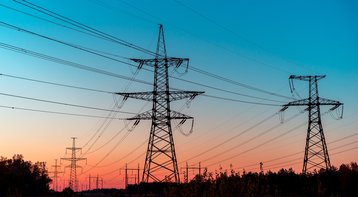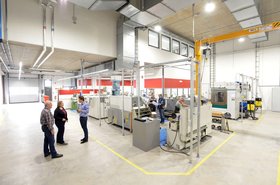Behind-the-meter (BtM) projects, where renewable power farms are directly powering customers such as industrial parks via microgrids, could be a way to avoid grid connection issues, experts have said this week.
At the Aurora Renewables Summit in London last week, representatives from the renewable power industry discussed the issues the industry is facing in Europe, and how interconnection queues to get projects connected to power grids were hurting the sector.
During the event, Aurora said Great Britain has around 600GW of renewable energy projects in the interconnection queue, which is far more capacity than GB’s current power use. Aurora noted, however only around 20 percent of the last 4,000 projects that requested connections actually came to fruition.
For the projects that do come to pass, grid connections remain a “huge challenge” for companies – delaying projects and impacting viability and profits. Wait times for some projects to actually get connected to the grid are now taking an average of around five years – and in some cases up to seven. Many projects are also being curtailed due to limited transmission capacity – and often not compensated for the task.
Richard Scott, VP of development and construction (onshore) at JERA Nex, said grid queues are a “fundamental issue” for the UK.
“We’re really not clear on what the grid connection timeline is, and it’s really difficult to make a clear and justifiable investment case to take projects forward,” he said.
Alexa Sharples, corporate strategy director at Low Carbon, added that developers are being told they won’t get connections for projects until the 2030s, and even when companies are given firm connection dates, they are still seeing delays.
Alongside limited transmission infrastructure, another reason for the shortage, said Bruce Huber, CEO of Alexa Capital, was that “every developer worth its salt” has been hiring electrical talent, leading to a shortage at grid organizations.
Unsurprisingly, there were calls for reform and investments to improve grid connection speeds, train and hire more engineers to perform those connections, and build out more grid infrastructure.
Alexa Capital’s Huber said that in the meantime, behind-the-meter projects may be a good option for de-risking investments and avoiding connection woes.
Huber called BtM projects a “huge aspect” of his company’s funding: “It is real and it is growing,” he said. He used an example of a project in the MISO connection area around Ohio that is developing megawatt parks for industrial customers.
“They're building these megawatt industrial parks, and then just adding and inviting more and more industrial customers to what are really behind-the-meter microgrids,” he said. While he said in that example it would grid-connected, but as a balancing or resource of last resort.
“I think we can take a page out of that book and see the development of more of these industrial parks,” he added, especially around ports in the UK and Europe.
JERA Nex’s Scott said his company is actively interested in colocating the production of low-carbon fuels such as hydrogen at a number of sites. With hydrogen fuel cells beginning to be deployed at data centers for primary and secondary power, this could be important for the industry going forward.
Huber also said there is increasing focus on larger and larger projects and a hollowing out of smaller projects “where there just isn’t the resource” to plug them into the system.
Sharples concurred: “We're not talking about 20-50MW solar projects anymore, it’s anything from 300 to 600MW projects now. It’s a completely different way of operating.”
Likewise, Aurora noted that battery storage is increasingly important in project viability, as selling power back to the grid at times of high prices can offset the fact projects can be forced to curtail the amount of power being sold to the grid at times of high capacity.
Battery storage will also be an important component of BtM projects, as customers such as data centers demand constant power, even when renewable generation capacity is low.







